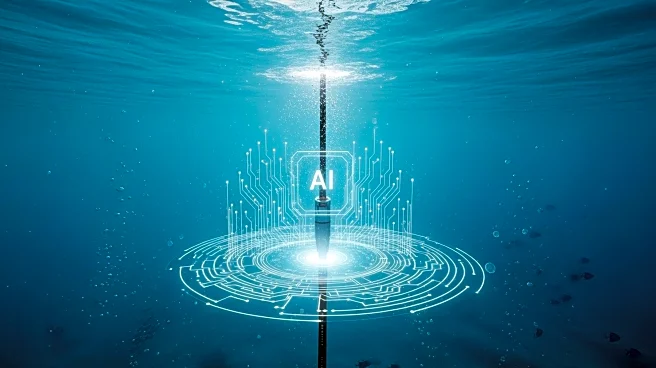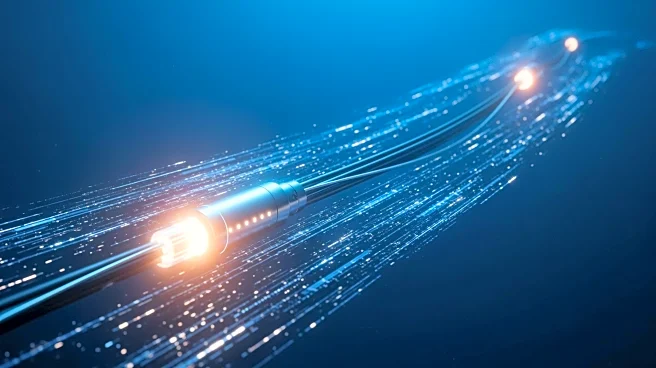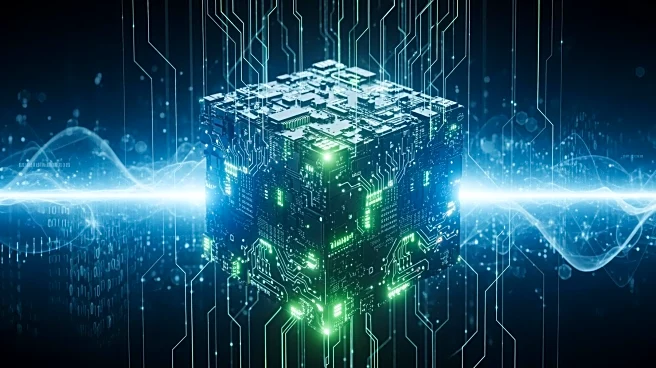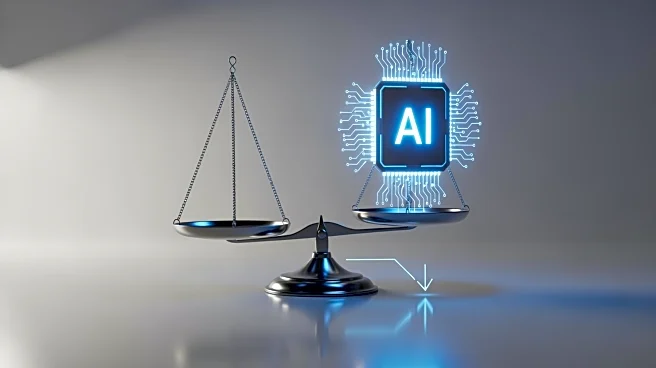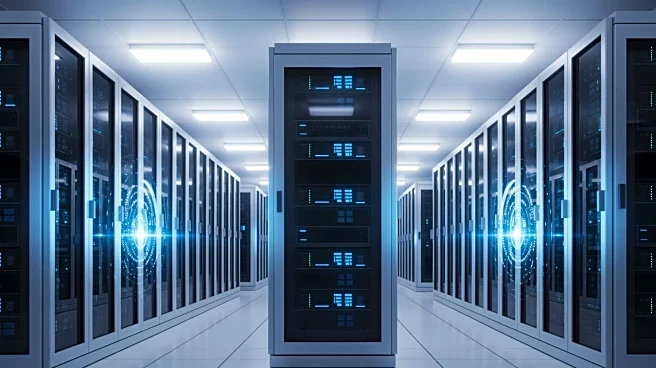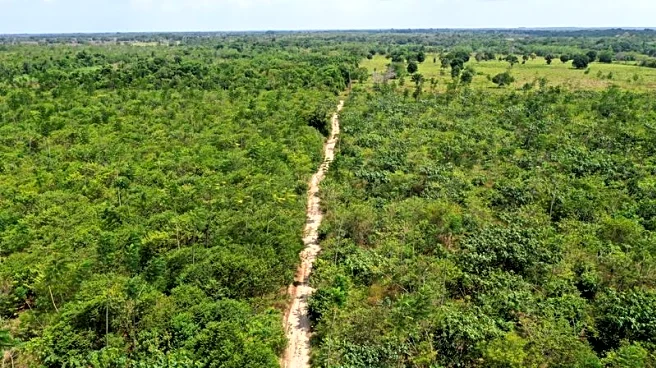What's Happening?
Underwater communication cables, which carry over 95% of international data and voice traffic, are seeing increased investment as tech giants expand their AI capabilities. Companies like Meta, Amazon,
and Google are investing heavily in subsea cable projects to support their growing networks of data centers. Meta's Project Waterworth and Amazon's Fastnet are examples of large-scale cable initiatives aimed at enhancing global connectivity. The demand for subsea cables is driven by the need for robust infrastructure to support computation-intensive AI models. Investment in new cable projects is expected to reach $13 billion between 2025-2027, nearly double the amount invested in previous years.
Why It's Important?
The surge in subsea cable investment is crucial for maintaining global internet connectivity and supporting the AI industry's growth. These cables are essential for data transmission across continents, enabling seamless communication and transactions. The expansion of subsea infrastructure reflects the increasing reliance on AI technologies, which require high-speed, reliable connections. This trend has significant implications for global commerce, cybersecurity, and technological innovation, as companies strive to enhance their digital capabilities. The investment also highlights the strategic importance of subsea cables in geopolitical contexts, where disruptions can impact national security and economic stability.
What's Next?
As investment in subsea cables continues, companies are likely to pursue further projects to enhance global connectivity. The focus on AI infrastructure may lead to advancements in cable technology, improving data transmission speeds and reliability. Additionally, the strategic importance of these cables may prompt increased security measures to protect against potential sabotage or accidental damage. Governments and industry leaders will need to collaborate to ensure the resilience and security of subsea infrastructure, addressing challenges related to geopolitical tensions and environmental impact.
Beyond the Headlines
The expansion of subsea cables raises concerns about their vulnerability to damage and sabotage, which can disrupt global communications. As geopolitical tensions rise, the security of these cables becomes increasingly important, prompting efforts to safeguard them from potential threats. The reliance on subsea infrastructure also highlights the need for sustainable practices, as environmental considerations become more pressing. These developments may lead to shifts in international policies and collaborations, as stakeholders work to balance technological advancement with security and sustainability.
